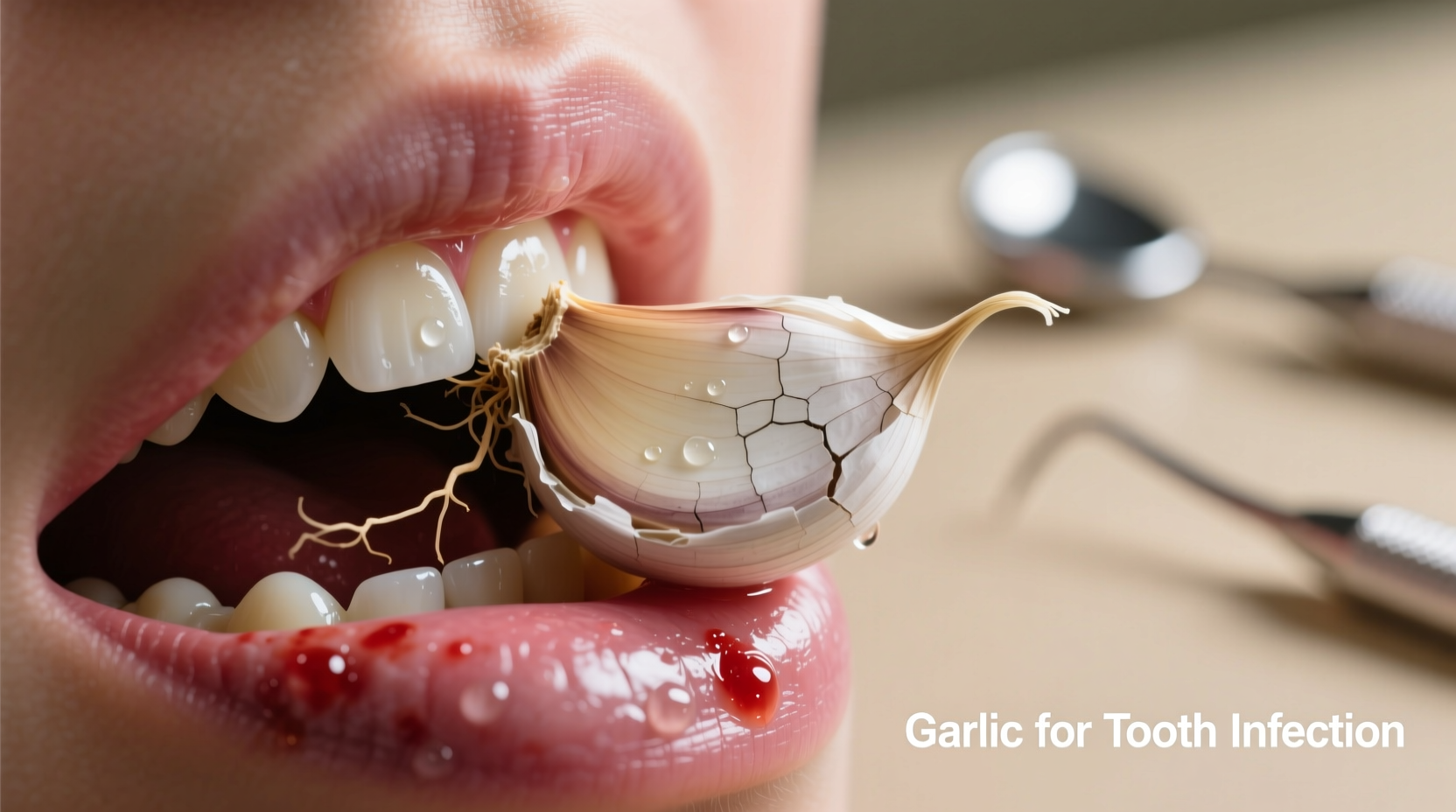Discover how garlic's natural compounds might offer short-term comfort for dental pain while understanding why professional dental care remains non-negotiable for treating tooth infections effectively.
Understanding Tooth Infections: More Than Just Pain
A tooth infection, or dental abscess, occurs when bacteria invade the inner pulp of your tooth. This serious condition requires prompt professional treatment, as untreated infections can spread to your jaw, neck, or even brain. While waiting for your dental appointment, you might seek temporary relief methods—but understanding the severity is crucial.
| Condition | Professional Treatment | Garlic's Role |
|---|---|---|
| Bacterial infection | Antibiotics prescribed by dentist | Allicin has antimicrobial properties but insufficient concentration |
| Tooth pain | Root canal or extraction | May provide temporary numbing effect |
| Swelling | Medical drainage and antibiotics | No significant impact on inflammation |
| Infection spread risk | Immediate professional intervention | Cannot prevent systemic complications |
Garlic's Scientific Basis for Dental Pain Relief
Research published in the Journal of Antimicrobial Chemotherapy confirms that allicin, garlic's active compound, demonstrates antimicrobial activity against various bacteria. However, the concentration achievable through home application falls significantly short of therapeutic levels needed to eliminate dental infections.
According to the American Dental Association, "While certain natural compounds show antimicrobial properties in laboratory settings, they cannot replace professional dental treatment for active infections." The National Institute of Dental and Craniofacial Research emphasizes that tooth infections require mechanical intervention to remove the infected tissue source.

Safe Application Methods for Temporary Relief
If you're experiencing dental pain while awaiting professional care, these garlic application methods may provide limited temporary relief:
- Crushed garlic paste: Crush one fresh clove to activate allicin, mix with a pinch of salt, and apply directly to the affected area for no more than 20 minutes
- Gargle solution: Steep crushed garlic in warm water for 10 minutes, strain, and use as a mouth rinse (do not swallow)
- Oil infusion: Combine crushed garlic with coconut oil for a gentler application that reduces burning sensation
Important: Never place garlic directly against gums for extended periods, as it can cause chemical burns to delicate oral tissues. The Journal of Oral and Maxillofacial Surgery documents cases of garlic-induced tissue damage from prolonged direct application.
When Garlic Becomes Dangerous: Critical Warning Signs
Using garlic as anything more than temporary relief becomes dangerous when:
- Fever develops (indicating systemic infection spread)
- Swelling extends beyond the immediate tooth area
- Breathing or swallowing becomes difficult
- Pain persists beyond 48 hours despite home remedies
The Centers for Disease Control and Prevention reports that dental infections account for over 11 million emergency department visits annually in the United States, with increasing cases of severe complications from delayed treatment. Ignoring professional care while relying solely on home remedies can lead to life-threatening conditions like Ludwig's angina or sepsis.
Complementary Approaches That Actually Help
While waiting for your dental appointment, these evidence-based methods provide safer temporary relief than garlic alone:
- Rinsing with warm salt water (1/2 teaspoon salt in 8oz warm water) every 2-3 hours
- Applying cold compress externally to reduce swelling
- Taking over-the-counter pain medication as directed
- Maintaining strict oral hygiene without disturbing the affected area
Remember: These methods only address symptoms, not the infection itself. The Mayo Clinic confirms that "the only definitive treatment for a tooth abscess involves draining the infection and eliminating the source through root canal therapy or extraction."
Why Professional Treatment Can't Wait
Tooth infections follow a predictable progression timeline:
- Days 1-2: Localized pain and sensitivity
- Days 3-5: Increasing pain, possible swelling, early bone involvement
- Days 6-10: Significant swelling, potential fever, spreading infection
- After 10 days: High risk of systemic complications including sepsis
Delaying professional care beyond the first few days dramatically increases treatment complexity and cost. The Journal of Endodontics reports that early intervention reduces treatment failure rates by 63% compared to delayed treatment.
Integrating Natural Approaches Safely
After professional treatment begins, certain natural approaches may support healing:
- Garlic supplements (consult your dentist first)
- Probiotics to maintain oral microbiome balance
- Vitamin C to support tissue healing
- Continued salt water rinses as recommended by your dentist
Always discuss any complementary approaches with your dental professional to ensure they won't interfere with your treatment plan.











 浙公网安备
33010002000092号
浙公网安备
33010002000092号 浙B2-20120091-4
浙B2-20120091-4